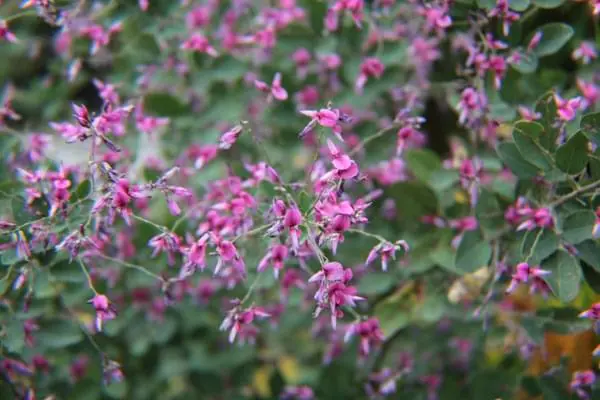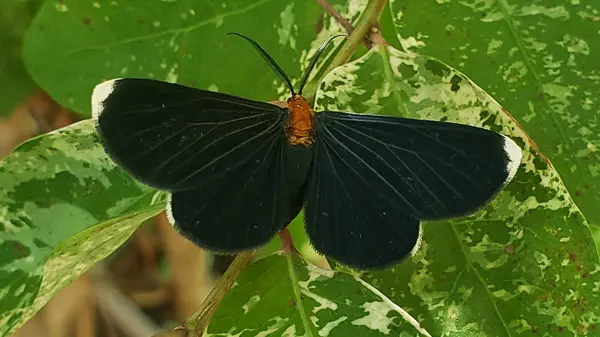By Amanda Rose Newton
Welcome to our Central Florida Moth Guide! Moths are often overshadowed by their butterfly cousins, but they play a crucial role in our ecosystem.

In this post, we’ll explore the different types of moths found in Central Florida, their life cycle, the best times to see them, and their many benefits to our environment.
Types of Moths in Central Florida
Thanks to our warm climate, Central Florida is home to a diverse array of moth species. Moths are a little bit more elusive than their more social butterfly cousins and may live a little shorter due to not always having mouthparts as adults.

Looking for excuses for moths to visit your yard? Like butterflies, moth caterpillars are partial to only a few plants, mostly in the same botanical family. Here are a few notable ones that might flutter into your landscape:
Polyphemus Moth (Antheraea polyphemus)
Description: Large, with a wingspan of up to 6 inches. Brownish color with large eyespots on their hindwings.
Host plants: Oak, maple, birch, and other deciduous trees.
When to See: Active from late spring to early summer.
Io Moth (Automeris io)
Description: Bright yellow wings with distinctive eye spots. The caterpillars have stinging spines, so please do not touch!

While not all spines come laced with venom (especially when it comes to butterflies), a best practice when it comes to moths is to not touch any raised part of the caterpillar.
Host plants: Willows, maples, oaks, and other trees and shrubs.
When to See: Seen from spring through early fall.
Luna Moth (Actias luna)
Description: Pale green wings with long tails and small eyespots.
Only lives for about a week in its adult form and receives nutrition from food stores in it’s large abdomen.
Host plants: Hickory, walnut, sumac, and sweetgum.
When to See: Typically appears in late spring.
White-Marked Tussock Moth (Orgyia leucostigma)
Description: Males are brown and gray, while females are wingless and do not fly. Caterpillars are hairy and colorful.
Host plants: A wide variety, including oaks, maples, and birches.
When to See: Active throughout the summer.
Tiger Moth (Arctia caja)
Description: Striking patterns of white, black, and orange.
Caterpillars are known as woolly bears.
Host plants: Low-growing plants such as dandelions, clover, and plantains.

When to See: Best seen from late spring to early fall.
Hummingbird Clearwing Moth (Hemaris thysbe)
Description: Resembles a small hummingbird with transparent wings.
Active during the day, especially around flowers.
Host plants: Honeysuckle, viburnum, snowberry, and hawthorns.
When to See: Seen from late spring to early fall.
Spanish Moth (Xanthopastis timais)
Description: Pink and white wings with black spots.
Host plants: Amaryllis and related plants.
When to See: Most active from spring through fall. Active at night but occasionally seen during the day.
Regal Moth (Citheronia regalis)
Description: Large moth with orange and gray markings. Caterpillars are known as hickory horned devils.
Host plants: Hickories, persimmons, and sumacs.

When to See: Active from late spring to early fall.
Rosy Maple Moth (Dryocampa rubicunda)
Description: Pink and yellow wings.
Small size, with a wingspan of about 2 inches.
Host plants: Maples, particularly red and silver maples.
When to See: Best seen from late spring to early summer.
Spotted Apatelodes Moth (Apatelodes torrefacta)
Description: Gray and brown wings with white spots.
Medium-sized moth, active during summer.
Host plants: Various trees, including maple, oak, and sycamore.
When to See: Typically seen from late spring through early fall.
Imperial Moth (Eacles imperialis)
Description: Large, yellow moth with purple or brown markings.
Caterpillars are green or brown with spines.
Host plants: Pine, oak, maple, and sweetgum.

When to See: Active in late summer and early fall.
Pink-Spotted Hawkmoth (Agrius cingulata)
Description: Large, gray moth with pink bands on the abdomen.
Host plants: Plants in the Convolvulaceae family, such as morning glories and sweet potatoes.
When to See: Active at night, especially in the summer.
*Carolina Sphinx Moth (Manduca sexta)
Description: Large, brown moth with white spots and lines.
Caterpillar is the infamous tomato horn worm. Large and green with a “horn” on it’s rear.
Host plants: Tobacco, tomato, Angel Trumpet, and other members of the nightshade family (Solanaceae).
When to See: Seen from spring to fall. Active primarily at night.
Cecropia Moth (Hyalophora cecropia)
Description: One of North America’s largest moths, with reddish-brown wings and crescent-shaped spots.
Host plants: Maple, birch, and cherry trees.
When to See: Active in late spring to early summer.
Oleander Moth (Syntomeida epilais)
Description: Black with iridescent blue-green wings and orange-tipped abdomen.

Host plants: Oleander and related plants.
When to See: Seen throughout the year, with peaks in late spring and early fall. Active mostly during the daytime.
*Snowbush Moth (Spilosoma congrua)
Description: White wings with black spots. Medium-sized moth
Host plants: Snowbush and other members of the Euphorbiaceae family.

When to See: Seen throughout the year, especially in the warmer months. Active at night.
*Cabbage Looper (Trichoplusia ni)
Description: Small, brown moth with silver markings on the wings.
Host plants: Cabbage, broccoli, cauliflower, and other cruciferous vegetables.
When to See: Seen throughout the year, with peaks in spring and fall. Active mostly at night.
*Fall Armyworm (Spodoptera frugiperda)
Description: Brownish-gray moth with a white spot on each forewing.
Host plants: Corn, rice, sorghum, and other grasses, including turf grass.
Time to See: Seen throughout the year, with peaks in late summer and early fall.
Ailanthus Webworm Moth (Atteva aurea)
Description: Brightly colored with orange, white, and black patterns.
Host plants: Tree-of-heaven (Ailanthus altissima) and Paradise tree.
When to See: Seen throughout the year, especially in the warmer months. Active during the daytime.
Scarlet-Bodied Wasp Moth (Cosmosoma myrodora)
Description: Scarlet body with black wings and white spots. Mimics wasps in appearance.

Host plants: Hempweed and other members of the Apocynaceae family.
When to See: Active during the day and night, seen mostly in summer and fall.
* Denotes a Pest Species. Understanding their lifecycles and when they are most likely to show up is helpful in establishing a management plan for your landscape.
Moth Life Cycle
Moths, like butterflies, undergo complete metamorphosis with four distinct stages:
Egg: Female moths lay eggs on host plants that will provide food for the hatching larvae.
Larva (Caterpillar): The larval stage is primarily focused on feeding and growth. Caterpillars often have specific host plants they feed on. This is the most damaging stage for the few pest species outlined above.
Pupa (Cocoon): After reaching a certain size, the caterpillar forms a cocoon, which is a less fancy version of a butterfly chrysalis, entering the pupal stage where it undergoes transformation. This stage often happens out of few, under a few inches of soil or camouflaged.
Adult Moth: The adult moth emerges, ready to reproduce, maybe not eat, and continue the cycle.
When to See Them
Moth activity in Central Florida varies by species and season. Generally, you can spot moths from late spring through early fall, with peak activity often occurring in the summer months. This makes now an excellent time to become a moth enthusiast!

Many moths are nocturnal, so dusk and nighttime are the best times to observe them. However, there are also daytime moths, such as the Hummingbird Clearwing Moth and Oleander Moth, which can be seen during the day, especially around flowers.
Benefits of Moths
Moths are not just fascinating to observe; they also provide several ecological benefits:
Pollination: Like butterflies, many moths are important pollinators for various plants, including night-blooming flowers.
Food Source: Moth larvae and adults serve as a vital food source for birds, bats, and other wildlife.
Ecosystem Health: The presence and diversity of moths can be an indicator of a healthy ecosystem.
Role in the Ecosystem
Moths play a critical role in the food web. Their larvae help control plant growth by feeding on foliage, while adult moths contribute to pollination. Additionally, moths are a key food source for many animals, supporting the biodiversity of the region. Their interactions with plants and predators help maintain the balance within their habitats.
By understanding and appreciating the diverse moth species in our region, we can better appreciate the intricate web of life that sustains our natural world. So, next time you see a moth fluttering around your porch light or a daytime moth buzzing around flowers, take a moment to marvel at its beauty and the vital role it plays in our environment.
Happy Moth Hunting!


